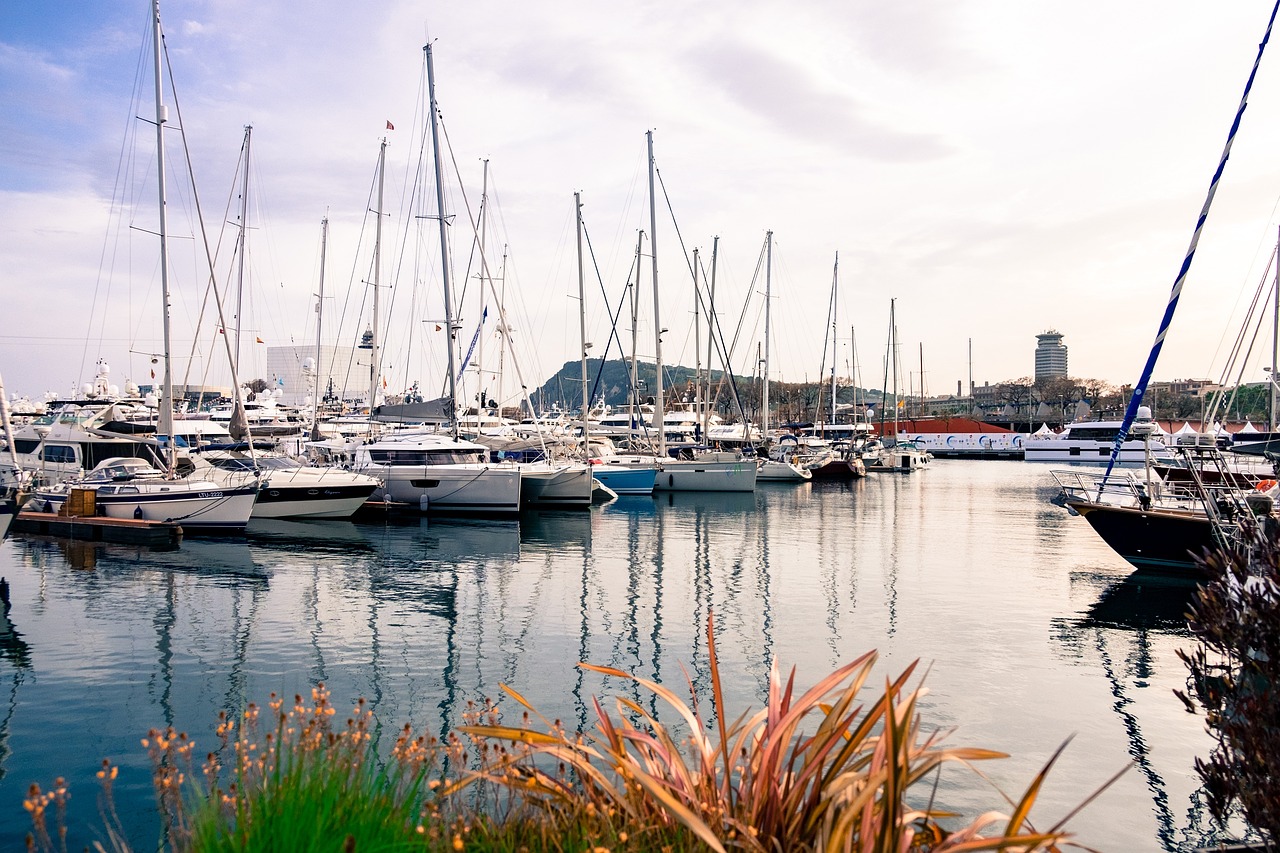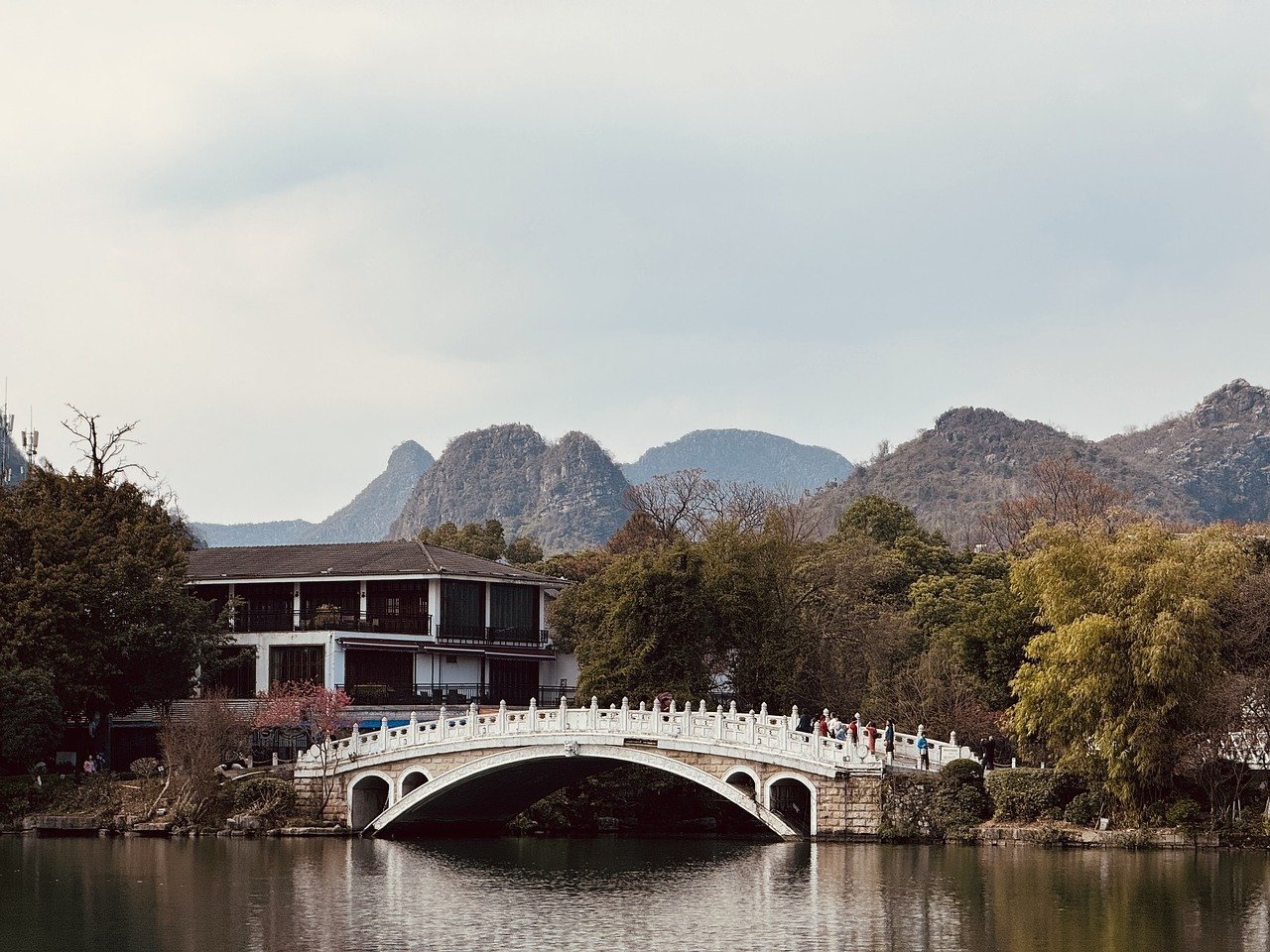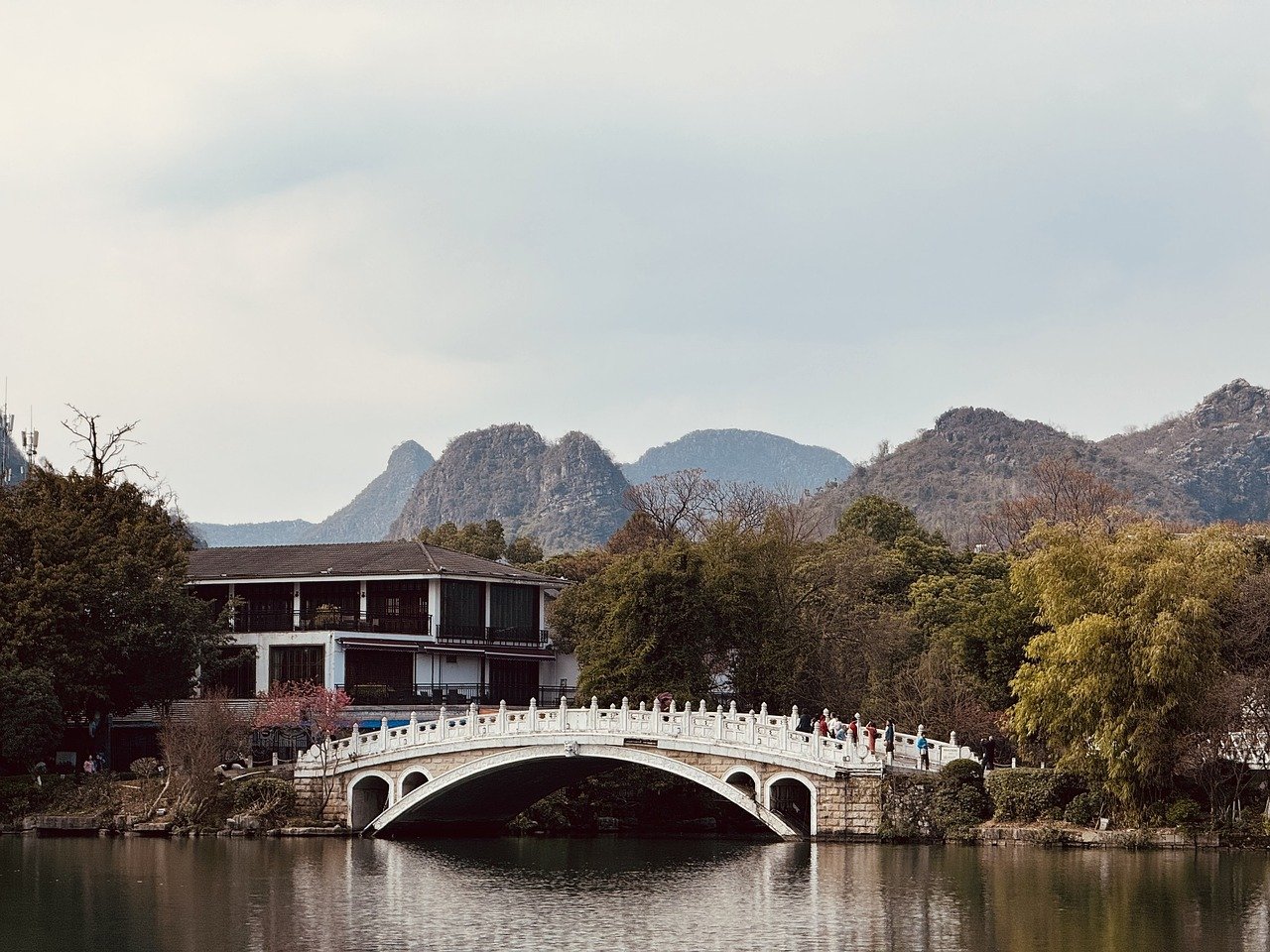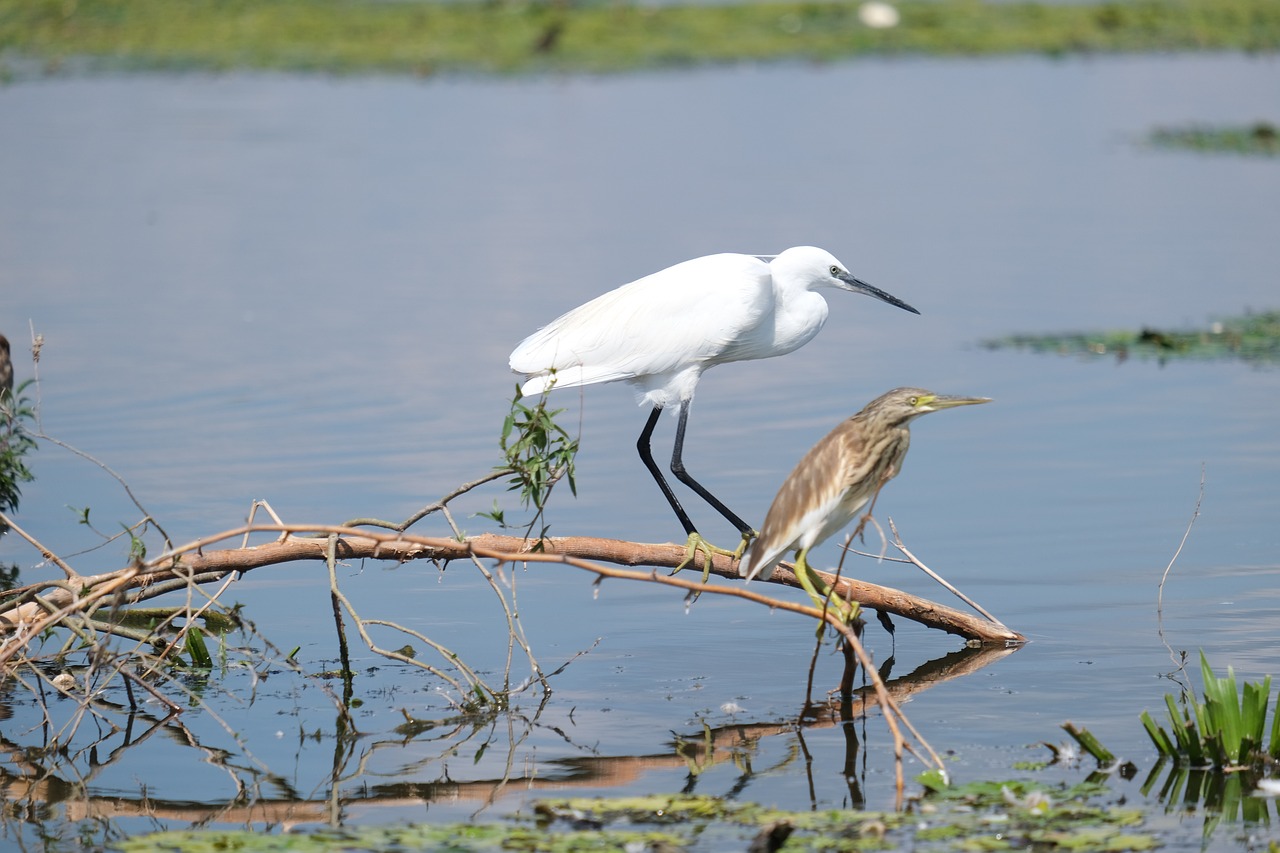In today's fast-paced world, the urgent need to protect our natural habitats has never been more critical. The economic advantages of conservation go beyond just preserving beautiful landscapes; they encompass a wide range of benefits that can significantly enhance our quality of life. By safeguarding these vital ecosystems, we are not only ensuring the survival of countless species but also paving the way for sustainable economic development. The intricate web of life that exists within these habitats provides essential services that directly contribute to our economy. From agriculture to tourism, the positive impacts are profound and far-reaching.
Biodiversity is the backbone of economic stability, playing a crucial role in providing essential services that we often take for granted. Think about it: without pollinators, our crops would fail, and our food supply would dwindle. The intricate relationships between species ensure that our ecosystems function effectively, providing vital resources such as clean air, fresh water, and fertile soil. These resources are indispensable for agriculture and industry, ultimately supporting food security and livelihoods. In fact, studies have shown that regions with rich biodiversity are often more resilient to economic shocks, making them a valuable asset for sustainable development.
Eco-tourism has emerged as a booming sector that not only promotes conservation but also generates substantial income for local communities. Imagine visiting a pristine rainforest or a vibrant coral reef, where your presence helps fund conservation efforts and supports the local economy. By protecting natural habitats, we enhance tourism experiences, drawing in visitors who are eager to explore and appreciate the beauty of our planet. This influx of tourists can lead to job creation, increased local spending, and improved infrastructure, all while fostering a deeper connection between people and nature.
Let’s take a closer look at some inspiring case studies that illustrate the economic benefits of eco-tourism. For instance, in Costa Rica, the establishment of national parks has led to a dramatic increase in visitor numbers, with eco-tourism now accounting for a significant portion of the country's GDP. Local communities have engaged in sustainable practices, creating a win-win situation where conservation efforts flourish, and economic prosperity follows. These success stories highlight the potential for replication in other regions, showcasing how habitat protection can lead to tangible economic growth.
Community involvement is a key ingredient for the success of eco-tourism initiatives. When local populations actively participate in conservation efforts, they not only protect their environment but also reap economic benefits. For example, indigenous communities in the Amazon have formed partnerships with eco-tourism operators, enabling them to share their culture and knowledge while generating income. This collaborative approach ensures that sustainable practices are upheld, creating a sense of ownership and responsibility towards the natural resources that sustain their livelihoods.
Despite its potential, eco-tourism is not without challenges. Issues such as climate change and over-tourism can threaten the very habitats that attract visitors. For instance, rising temperatures can lead to coral bleaching, impacting marine tourism. To combat these challenges, eco-tourism operators must adopt sustainable management strategies. This could include limiting visitor numbers, implementing conservation fees, or promoting off-season travel to reduce pressure on natural resources. By addressing these challenges head-on, we can ensure that eco-tourism remains a viable and beneficial industry for years to come.
Natural habitats provide a wealth of ecosystem services that translate into economic benefits for communities and industries alike. Consider the role of wetlands in water purification or forests in carbon sequestration. These services not only enhance our environment but also save money on infrastructure and disaster recovery costs. For instance, healthy wetlands can reduce flooding, thereby lowering the expenses associated with disaster management. By investing in the protection of these ecosystems, we are essentially investing in our economic future.
Investing in conservation initiatives is not just an ethical choice; it’s a smart economic move. The financial benefits of protecting natural habitats are substantial, ranging from job creation to increased property values. Moreover, by preserving ecosystems, we can reduce disaster recovery costs associated with natural disasters, which have been on the rise due to climate change. In essence, every dollar spent on conservation can yield significant returns, making it a wise investment for both present and future generations.
Public-private partnerships are instrumental in funding conservation projects that yield significant economic benefits. These collaborations can lead to innovative solutions that balance economic growth with environmental protection. For example, a partnership between a local government and a private conservation organization can result in the restoration of degraded habitats, enhancing biodiversity while creating job opportunities in the process. Such successful collaborations serve as a model for other regions, demonstrating that working together can produce remarkable outcomes.
Integrating conservation into long-term economic planning is essential for sustainable development. By adopting sustainable practices across various sectors, we can ensure economic growth without compromising environmental integrity. This approach not only benefits the economy but also safeguards our planet for future generations. It’s about creating a balance between development and conservation, recognizing that our well-being is intricately linked to the health of our natural environments.

Biodiversity is not just a buzzword; it's a crucial pillar of our economy. Imagine a world without the vibrant tapestry of life that surrounds us. Bees buzzing around, pollinating our crops, or the diverse plants that provide us with medicine and food. These elements play a significant role in maintaining economic stability, and their absence could spell disaster for industries reliant on them. The intricate web of life supports vital services that directly contribute to our livelihoods, making biodiversity a key player in ensuring a robust economy.
Consider the agricultural sector, which is heavily dependent on biodiversity for pollination, pest control, and genetic resources. When we protect natural habitats, we safeguard the species that perform these essential functions. For instance, without pollinators like bees, many fruits and vegetables we enjoy would become scarce, leading to higher prices and food insecurity. This chain reaction could affect not just farmers, but every single consumer, demonstrating how interconnected our economy is with the natural world.
Moreover, biodiversity contributes to ecosystem resilience. Diverse ecosystems can better withstand environmental stresses and recover from disturbances like droughts or floods. This resilience translates to economic stability, as communities are less likely to face catastrophic losses when their natural systems are robust. For example, a diverse wetland can absorb excess rainwater, reducing the risk of flooding and the economic costs associated with disaster recovery.
To illustrate the economic benefits of biodiversity, let's look at a few key ecosystem services:
| Ecosystem Service | Economic Benefit |
|---|---|
| Pollination | Increased crop yields, leading to higher profits for farmers. |
| Pest Control | Reduced need for chemical pesticides, lowering costs for agricultural producers. |
| Water Purification | Lower water treatment costs for municipalities. |
| Carbon Sequestration | Mitigation of climate change impacts, saving economies from disaster recovery costs. |
As we can see, the economic advantages of preserving biodiversity are numerous and far-reaching. When we invest in protecting natural habitats, we are not just saving wildlife; we are also investing in our economic future. The benefits ripple through our communities, enhancing food security, supporting local economies, and ensuring that we have the resources necessary for sustainable development.
In conclusion, the role of biodiversity in economic stability cannot be overstated. It is a vital asset that supports various industries and contributes to the overall health of our planet. By recognizing and valuing these contributions, we can make informed decisions that prioritize both economic growth and environmental protection, ensuring a prosperous future for generations to come.

In recent years, eco-tourism has emerged as a vibrant and lucrative sector that not only promotes the conservation of our planet's precious natural resources but also generates significant income for local communities. Imagine stepping into a lush rainforest, surrounded by the sounds of exotic birds and the rustle of leaves, all while knowing that your visit is contributing to the preservation of this beautiful habitat. That's the magic of eco-tourism! It’s not just about taking a vacation; it’s about making a positive impact on the environment and the economy.
Eco-tourism has a dual purpose: it aims to provide travelers with immersive experiences in nature while ensuring that local ecosystems are protected. This industry thrives on the principle of sustainability, which means that the activities involved are designed to minimize environmental impact while maximizing economic benefits. For instance, when tourists visit a national park, they contribute to the local economy through park fees, guided tours, and the purchase of local crafts and food. This influx of revenue can be a game-changer for small communities that rely on tourism as their primary source of income.
Moreover, eco-tourism encourages the development of sustainable practices. Local businesses often adopt eco-friendly measures to attract environmentally conscious travelers. This can include using renewable energy sources, reducing waste, and promoting the use of local materials. By fostering a culture of sustainability, eco-tourism not only protects natural habitats but also educates visitors about the importance of environmental stewardship. As travelers return home, they carry with them a newfound appreciation for nature, inspiring them to advocate for conservation efforts in their own communities.
However, it's essential to recognize that the eco-tourism industry is not without its challenges. Over-tourism, for instance, can lead to habitat degradation and strain local resources. As more travelers seek out pristine locations, the very ecosystems they wish to enjoy can become threatened. Therefore, it's crucial for stakeholders in the eco-tourism sector to implement effective management strategies. This includes setting visitor limits, promoting off-peak travel, and ensuring that local communities are actively involved in decision-making processes.
To illustrate the potential of eco-tourism, let’s take a look at some successful initiatives around the globe:
| Location | Initiative | Economic Impact |
|---|---|---|
| Costa Rica | National Parks and Reserves | Increased tourism revenue contributing to over $3 billion annually |
| Kenya | Community-Based Wildlife Conservation | Boosted local economies through sustainable safari tours |
| Galápagos Islands | Strict Visitor Regulations | Preserved biodiversity while generating significant tourism income |
These case studies highlight how eco-tourism can be a catalyst for economic growth while simultaneously protecting vital natural habitats. As we continue to explore the world around us, embracing eco-tourism can lead to a more sustainable future, where both the environment and local communities thrive.
In conclusion, eco-tourism is not just a trend; it’s a movement towards a more sustainable way of traveling that benefits everyone involved. From the travelers seeking adventure to the communities eager to preserve their cultural and natural heritage, eco-tourism represents a win-win scenario. By choosing eco-friendly travel options, we can all play a part in protecting our planet for future generations.

When we talk about eco-tourism, it's not just a buzzword; it's a transformative approach that has proven to be a game-changer in various regions around the globe. Let’s dive into some inspiring case studies that illustrate how protecting natural habitats can lead to remarkable economic and environmental outcomes.
One shining example is the Galápagos Islands in Ecuador. These islands are famous for their unique biodiversity and have become a hotspot for eco-tourism. The government, in collaboration with local communities, has implemented strict conservation measures to protect the delicate ecosystems. As a result, eco-tourism has flourished, generating substantial income for the local economy. In 2019 alone, the islands welcomed over 270,000 visitors, contributing approximately $500 million to the local economy. This influx of tourists not only supports local businesses but also funds conservation efforts that ensure the preservation of the islands' unique flora and fauna.
Another compelling case study can be found in Costa Rica, a pioneer in eco-tourism. The country has dedicated over 25% of its land to protected areas, which has become a major draw for tourists seeking adventure and natural beauty. The Monteverde Cloud Forest Reserve is a prime example, where visitors can explore lush trails while engaging in activities like bird watching and zip-lining. This eco-tourism initiative has created thousands of jobs for local residents, ranging from tour guides to hospitality services, significantly boosting the economy of the region. The emphasis on sustainability has not only preserved the environment but has also fostered a culture of conservation among the locals.
In Africa, the Maasai Mara National Reserve in Kenya showcases how eco-tourism can benefit both wildlife and local communities. Here, eco-friendly lodges offer tourists the chance to witness the incredible wildlife migrations while ensuring that a portion of the proceeds goes back to the Maasai people. This model has empowered the local community economically and socially, allowing them to invest in education and healthcare. The balance between tourism and conservation has proven to be a win-win situation, where both the environment and the local economy thrive.
To further illustrate the impact of eco-tourism, consider the following table that summarizes key statistics from these successful case studies:
| Location | Visitor Numbers (Year) | Economic Impact ($) | Conservation Efforts |
|---|---|---|---|
| Galápagos Islands | 270,000 (2019) | $500 million | Strict conservation measures, community involvement |
| Costa Rica (Monteverde) | Over 1 million (2020) | Significant job creation | 25% of land protected, sustainability practices |
| Maasai Mara, Kenya | Over 300,000 (2021) | Substantial community funding | Revenue sharing with local Maasai |
These case studies not only highlight the economic benefits of eco-tourism but also emphasize the importance of community involvement and sustainable practices. As we can see, when local populations are engaged and empowered, the results can be astonishing. Eco-tourism isn't just about observing nature; it's about creating a symbiotic relationship between humans and the environment, ensuring that both can thrive for generations to come.
In conclusion, the success stories from the Galápagos Islands, Costa Rica, and Maasai Mara serve as powerful reminders of what can be achieved when we prioritize the protection of natural habitats. By investing in eco-tourism, we are not only safeguarding our planet but also paving the way for sustainable economic growth.

When it comes to eco-tourism, the heart and soul of its success often lie in the hands of the local communities. Imagine a vibrant tapestry of culture, tradition, and natural beauty, where locals not only share their stories but also play a pivotal role in preserving their environment. Community involvement in eco-tourism isn’t just beneficial; it’s essential. By engaging local populations, eco-tourism initiatives can ensure that the benefits of tourism are felt directly by those who have the most at stake—the residents of these precious natural habitats.
One of the most compelling aspects of community involvement is the economic boost it provides. When locals are actively engaged in eco-tourism, they can create jobs, promote local crafts, and even offer guided tours that showcase their unique knowledge of the land. This not only leads to increased income for families but also fosters a sense of pride and ownership over their natural resources. Furthermore, as communities benefit economically, they become more invested in the protection of their environment. It’s a win-win scenario!
Moreover, community involvement can take many forms. For instance, local residents can:
By actively involving local populations, eco-tourism can cultivate a deeper connection between tourists and the destination. Visitors not only experience the stunning landscapes but also gain insights into the cultural heritage and traditions of the area. This immersive experience often leads to a more profound appreciation for the environment and a commitment to its preservation.
However, it’s essential to recognize that community involvement must be approached thoughtfully. There can be challenges, including the risk of cultural commodification or the potential for conflicts over resource use. To mitigate these issues, eco-tourism operators should prioritize collaboration and open communication with local communities. Building trust and ensuring that community voices are heard can lead to more sustainable and equitable outcomes.
In conclusion, community involvement in eco-tourism is not just a trend; it’s a necessary strategy for sustainable development. By empowering local populations, eco-tourism can create economic opportunities, foster environmental stewardship, and enhance the overall travel experience. The future of eco-tourism depends on the active participation of those who call these natural wonders home. Let’s not forget that when communities thrive, so do their ecosystems, leading to a healthier planet for generations to come.
Q1: How can communities get involved in eco-tourism?
A1: Communities can get involved by participating in conservation projects, offering local tours, and engaging in decision-making processes regarding eco-tourism initiatives.
Q2: What are the economic benefits of community involvement in eco-tourism?
A2: Economic benefits include job creation, increased income from tourism, and opportunities for local businesses to thrive, all of which contribute to the overall economic stability of the community.
Q3: Are there any risks associated with community involvement in eco-tourism?
A3: Yes, risks include cultural commodification and resource conflicts. It’s crucial to approach community involvement with care and ensure that local voices are prioritized.
Q4: How does community involvement enhance the tourist experience?
A4: When locals share their culture and knowledge, tourists gain a deeper understanding of the area, leading to a more enriching and meaningful travel experience.

While eco-tourism presents a plethora of opportunities for economic growth and environmental preservation, it is not without its challenges. One of the most pressing issues is climate change. As weather patterns become increasingly unpredictable, eco-tourism operators find it difficult to maintain consistent visitor experiences. For instance, rising temperatures can affect wildlife migration patterns, leading to fewer sightings for tourists eager to witness nature's wonders. This unpredictability can result in reduced visitor numbers, impacting local economies that rely heavily on eco-tourism.
Another significant challenge is over-tourism. While attracting visitors is essential for economic viability, too many tourists can lead to environmental degradation. Popular natural sites often suffer from erosion, litter, and habitat destruction, which can diminish the very attractions that draw tourists in the first place. Operators must strike a delicate balance between promoting their destinations and ensuring that they do not become victims of their own success.
Furthermore, eco-tourism operators often face financial constraints. Many small-scale operators lack the capital to invest in sustainable practices that could enhance their offerings. This can create a vicious cycle where the inability to invest leads to poorer tourist experiences, which in turn affects revenue. In a competitive market, those who cannot adapt may find themselves unable to keep pace with larger, more resource-rich competitors.
Moreover, there is a constant need for community engagement. Successful eco-tourism relies on the involvement of local communities, but fostering this engagement can be challenging. Operators must ensure that local populations see tangible benefits from eco-tourism initiatives, which requires effective communication and collaboration. If communities feel excluded from the economic benefits, they may not support conservation efforts, jeopardizing the sustainability of eco-tourism in the region.
Lastly, regulatory challenges can hinder eco-tourism operators. Navigating the complex web of environmental regulations can be daunting, especially for small businesses. Striking a balance between compliance and operational flexibility is crucial for success. Operators must stay informed about changing regulations and be adaptable to ensure they remain compliant while still providing exceptional experiences for their guests.
In summary, while the eco-tourism sector holds immense potential, operators must navigate a series of challenges, including climate change, over-tourism, financial constraints, community engagement, and regulatory hurdles. Addressing these issues is essential for the long-term sustainability and success of eco-tourism initiatives, ensuring that they can continue to benefit both the economy and the environment.

Natural habitats are not just beautiful landscapes; they are the backbone of our economy, providing essential ecosystem services that directly impact our daily lives. These services include water purification, carbon sequestration, and soil fertility, all of which play a pivotal role in sustaining agricultural productivity and ensuring clean water supplies. Imagine a world where rivers run dry or crops fail due to poor soil quality—this is the reality we face without these vital services. The economic implications are staggering, as they not only affect food security but also the livelihoods of millions who depend on these resources.
For instance, let's consider water purification. Wetlands and forests act as natural filters, removing pollutants from water before it reaches our drinking supply. This service can save municipalities significant amounts in water treatment costs. According to a study by the World Resources Institute, investing in natural filtration systems can yield returns up to 10 times the initial investment. That’s not just a win for the environment; it’s a smart economic strategy.
Furthermore, the role of carbon sequestration cannot be overstated. Forests and mangroves absorb carbon dioxide, helping to mitigate climate change. By protecting these natural habitats, we not only combat global warming but also reduce the economic costs associated with climate-related disasters. The Intergovernmental Panel on Climate Change (IPCC) estimates that every dollar spent on ecosystem restoration can save up to $30 in disaster recovery costs. This is a clear illustration of how investing in our planet's health translates into financial savings.
To highlight the economic impact of these services, let’s look at a simple table that outlines the benefits of various ecosystem services:
| Ecosystem Service | Economic Benefit |
|---|---|
| Water Purification | Reduced municipal water treatment costs |
| Carbon Sequestration | Lower disaster recovery costs |
| Soil Fertility | Increased agricultural productivity |
Moreover, these ecosystem services contribute to the overall economic stability of communities. Healthy ecosystems support diverse industries, from agriculture to tourism, creating jobs and stimulating local economies. For example, regions that maintain their natural habitats often attract eco-tourists, who contribute significantly to local businesses. This symbiotic relationship between conservation and economic growth is a powerful reminder of why protecting our environment is not just an ethical obligation but also a strategic economic decision.
In conclusion, the economic impact of environmental services is profound and multifaceted. By recognizing the intrinsic value of these services, we can advocate for policies that prioritize habitat protection and sustainable practices. After all, a thriving natural environment is synonymous with a thriving economy. As we move forward, let’s ensure that our economic strategies align with the preservation of our planet, paving the way for a sustainable future.

Investing in conservation is not just a noble cause; it’s a strategic economic decision that can yield impressive returns. When we think about conservation, we often picture lush forests, vibrant coral reefs, and diverse wildlife. However, the economic implications of preserving these natural habitats are profound and multifaceted. By channeling funds into conservation initiatives, we can foster sustainable development that benefits both the environment and the economy.
One of the most compelling arguments for investing in conservation is the potential for job creation. According to recent studies, every dollar spent on conservation generates significant employment opportunities in various sectors, including tourism, agriculture, and environmental management. For instance, the National Oceanic and Atmospheric Administration (NOAA) estimates that coastal restoration projects can create up to 30 jobs for every $1 million invested. This is not just about saving the planet; it's about creating livelihoods and boosting local economies.
Moreover, protecting natural habitats can lead to increased property values. Areas that are rich in biodiversity and natural beauty tend to attract more residents and tourists, thereby enhancing the real estate market. A study conducted by the National Association of Realtors found that properties near parks and natural reserves sell for up to 20% more than those without such proximity. This trend highlights how conservation efforts can translate into economic gains for homeowners and local governments alike.
Another significant economic benefit of investing in conservation is the reduction of disaster recovery costs. Natural ecosystems, such as wetlands and forests, play a crucial role in mitigating the impacts of natural disasters like floods and hurricanes. By preserving these environments, we can save billions in disaster recovery expenses. For example, a report from the Nature Conservancy indicates that every dollar spent on wetland restoration can save up to $5 in avoided flood damage. This is a classic case of spending wisely today to avoid hefty costs tomorrow.
To illustrate these points further, consider the following table that summarizes the economic benefits of investing in conservation:
| Economic Benefit | Details |
|---|---|
| Job Creation | Creates employment opportunities in tourism, agriculture, and environmental management. |
| Increased Property Values | Properties near natural areas can sell for up to 20% more. |
| Disaster Cost Reduction | Every dollar spent on wetlands can save $5 in avoided flood damage. |
In addition to these tangible benefits, investing in conservation also enhances our quality of life. Natural spaces provide recreational opportunities, improve mental health, and foster community cohesion. When people have access to clean air, beautiful landscapes, and thriving ecosystems, they are more likely to feel connected to their environment and invested in its preservation. This connection can lead to a stronger sense of community and shared responsibility for maintaining the health of our planet.
Ultimately, the message is clear: investing in conservation is a smart economic move. It’s a win-win situation where we can protect our planet while simultaneously reaping financial rewards. As we look toward the future, it’s crucial that we integrate conservation into our economic planning, ensuring that we create a sustainable world for generations to come.

Public-private partnerships (PPPs) have emerged as a dynamic and effective approach to funding conservation initiatives. These collaborations between government entities and private organizations leverage resources, expertise, and innovation to tackle environmental challenges. By pooling together financial investments and knowledge, PPPs can create robust conservation strategies that not only protect natural habitats but also stimulate economic growth.
For instance, consider a scenario where a government agency partners with a private corporation to restore a degraded wetland. The public sector may provide regulatory support and funding, while the private entity brings in technical expertise and additional financial resources. This synergy can lead to successful habitat restoration, which in turn enhances biodiversity and provides ecosystem services that benefit the local community.
One of the key advantages of PPPs in conservation is their ability to attract diverse funding sources. Traditional government funding can often be limited, but by engaging the private sector, conservation projects can secure the necessary capital to achieve their goals. This is particularly important in an era where climate change and habitat loss are pressing issues requiring immediate action. For example, a successful PPP might involve:
Moreover, successful PPPs often lead to substantial economic benefits. They can create jobs, boost local economies, and increase property values in areas where conservation efforts are implemented. For example, a partnership that focuses on reforestation can lead to the creation of jobs in nurseries, planting, and maintenance, while also increasing the attractiveness of the area for ecotourism.
However, it’s essential for these partnerships to be structured in a way that ensures accountability and transparency. Clear guidelines and objectives must be established to prevent any potential conflicts of interest and to ensure that conservation goals are prioritized over profit. When done right, PPPs can serve as a powerful tool for sustainable development, benefiting both the environment and the economy.
In conclusion, public-private partnerships represent a promising avenue for advancing conservation efforts. By combining the strengths of both sectors, these collaborations can deliver impactful results that safeguard natural habitats while fostering economic resilience. As we face increasing environmental challenges, the role of PPPs in conservation will undoubtedly become more critical.
1. What are public-private partnerships (PPPs)?
PPPs are collaborative agreements between government entities and private organizations aimed at achieving common goals, such as environmental conservation.
2. How do PPPs benefit conservation efforts?
They leverage resources, expertise, and funding from both sectors, leading to more effective and sustainable conservation initiatives.
3. Can you give an example of a successful PPP in conservation?
An example could be a partnership between a local government and a corporation to restore a wetland, enhancing biodiversity and providing ecosystem services.
4. What challenges do PPPs face?
Challenges include ensuring accountability, managing conflicts of interest, and aligning the goals of both public and private entities.
5. How can communities benefit from PPPs?
Communities can benefit through job creation, increased economic activity, and improved environmental health resulting from successful conservation efforts.

When we talk about long-term economic planning, it's essential to recognize that our decisions today will shape the world of tomorrow. Imagine building a house without a solid foundation; it might look good initially, but over time, cracks will appear, and it could even collapse. Similarly, if we fail to integrate sustainability into our economic strategies, we risk creating systems that are not resilient or capable of supporting future generations.
One of the keys to effective long-term economic planning is the incorporation of sustainable practices across various sectors. This means that businesses, governments, and communities need to work together to create a framework that prioritizes the environment while still promoting economic growth. For instance, renewable energy sources like solar and wind can provide jobs, reduce dependence on fossil fuels, and lower greenhouse gas emissions. By investing in these technologies, we not only protect our planet but also create a robust job market.
Moreover, sustainable agriculture practices can lead to healthier ecosystems and food systems. By adopting methods such as crop rotation, organic farming, and permaculture, we can enhance soil fertility and biodiversity, which ultimately supports food security. The economic benefits are clear: healthier crops mean higher yields and profits for farmers, while consumers enjoy fresh, nutritious food.
Another significant aspect of long-term planning is the importance of education and awareness. Communities that understand the value of sustainability are more likely to engage in practices that support it. Educational programs can empower individuals with the knowledge they need to make informed decisions about resource use, conservation, and sustainable living. This ripple effect can lead to a cultural shift where sustainability becomes a norm rather than an afterthought.
To further illustrate the economic advantages of integrating sustainability into long-term planning, consider the following table:
| Sustainable Practice | Economic Benefit |
|---|---|
| Renewable Energy | Job creation and reduced energy costs |
| Sustainable Agriculture | Higher yields and lower input costs |
| Eco-Friendly Products | Market growth and consumer loyalty |
| Conservation Initiatives | Tourism revenue and ecosystem services |
In conclusion, the integration of sustainability into long-term economic planning is not just an ethical choice; it's a practical necessity. As we face challenges like climate change, resource depletion, and economic inequality, the strategies we adopt today will determine the resilience of our economies tomorrow. By embracing sustainable practices, we can create a future where both the economy and the environment thrive in harmony.
Protecting natural habitats offers a plethora of economic advantages, including enhanced biodiversity that supports agriculture through pollination and pest control. This, in turn, leads to greater food security and sustainable livelihoods. Additionally, natural habitats provide essential ecosystem services that contribute to clean water, air quality, and climate regulation, all of which are vital for economic stability.
Eco-tourism is a booming industry that not only promotes conservation but also generates significant income for local communities. By attracting visitors to natural areas, eco-tourism creates jobs, supports local businesses, and fosters community engagement. When people experience the beauty of nature, they are more likely to support conservation efforts, creating a win-win scenario for both the environment and the economy.
Absolutely! There are numerous case studies showcasing successful eco-tourism initiatives. For instance, in Costa Rica, the protection of rainforests has led to a surge in eco-tourism, resulting in increased visitor numbers and enhanced community involvement. Similarly, in Kenya, wildlife conservation efforts have boosted tourism, providing economic benefits to local populations while ensuring the survival of endangered species.
Community involvement is crucial for the success of eco-tourism. When local populations actively participate in conservation efforts, they not only benefit economically but also become stewards of their environment. This participation ensures that sustainable practices are upheld and that the benefits of eco-tourism are shared among community members, fostering a sense of ownership and responsibility towards natural resources.
Despite its potential, eco-tourism operators face several challenges, including the impacts of climate change and the risk of over-tourism. These challenges can strain natural resources and diminish the quality of visitor experiences. To address these issues, operators must implement sustainable management practices, such as limiting visitor numbers and promoting conservation education, to ensure the long-term viability of eco-tourism.
Natural habitats provide a range of vital ecosystem services that directly impact economic activities. These services include water purification, carbon sequestration, and soil fertility, which are essential for agriculture, industry, and overall community health. By preserving these habitats, we not only safeguard these services but also enhance the economic resilience of communities that rely on them.
Investing in conservation is often viewed as a wise economic strategy because it can yield high returns. For instance, conservation initiatives can create jobs, increase property values, and reduce costs associated with disaster recovery. By prioritizing conservation, communities can build a sustainable economy that benefits both current and future generations.
Public-private partnerships in conservation involve collaboration between government entities and private organizations to fund and implement conservation projects. These partnerships can lead to significant economic benefits while preserving biodiversity and natural resources. By pooling resources and expertise, both sectors can achieve common goals that support environmental sustainability and economic growth.
Integrating conservation into long-term economic planning is essential for sustainable development. This can be achieved by incorporating environmental considerations into policies across various sectors, ensuring that economic growth does not come at the expense of natural resources. By adopting sustainable practices, communities can create a balanced approach that promotes economic prosperity while protecting the environment.